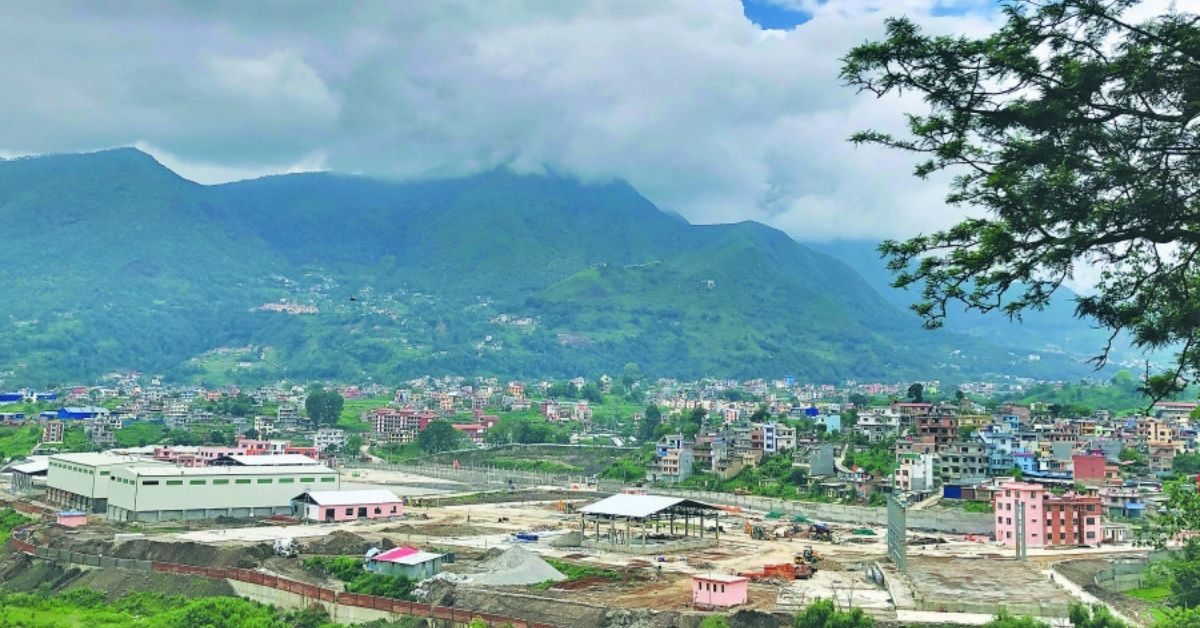A government agency will operate the newly built dry port at Chobhar for the time being as Covid-19 disruptions prevent the private sector from being brought on board immediately, officials said.
Chobhar dry port, or inland facility providing storage and customs clearance services, is not an entirely new concept in Kathmandu Valley. It is a modern avatar of Teku Bhansar of the Rana period, where cargo arrived from Bhimphedi on the backs of porters or by ropeway and was customs-cleared.
The Nepal Intermodal Transport Development Board, the government agency responsible for the construction and operation of the dry port, said that after a certain period, the new facility would be handed over to the private sector through a competitive bidding process.
The construction company has already handed over the new facility to the board with a one-year defect liability period.
The board has prepared the operation modality of the inland container depot at Chobhar on the south-western edge of Kathmandu Valley. The infrastructure sprawls over 230 ropanis, and will be able to accommodate 600 containers and 400 goods carriers. There are three warehouses to store cargo.
Ashish Gajurel, executive director of the board, told the Post that the launch date was yet to be fixed. “We have already informed the Ministry of Industry, Commerce and Supplies that the project has been completed.”
According to him, as per a preliminary discussion, the board will be operating the dry port for a certain time. “This is because of uncertainties including the Covid-19 pandemic. Once the operation is streamlined, the government will formally invite the private sector to run the facility.”
The Department of Customs is preparing to set up the necessary facilities. “The installation of quarantine and security posts is also in the discussion phase,” Gajurel said. “The facility will come into operation soon.”
According to the operation modality, sealed containers will arrive at the dry port without being processed at the transshipment point, for example, Birgunj, and all documentation and customs clearance tasks will be completed here.
After finishing the documentation process, the containers will be dispatched to their respective destinations. “Chobhar dry port will be operated under the same modality that is currently being practiced at other customs points,” said Gajurel.
He added that containers coming from the southern and northern border points would get an extra seal if the importers want to clear them at Chobhar Customs. Exporters can ship their goods by completing documentation work in Kathmandu, thus saving them a trip to the border point.
The construction of the dry port faced delays caused by the Covid-19 pandemic; but according to Gajurel, the project did not suffer cost variance. The inland port was constructed by the government with a Rs1.70 billion loan from the World Bank.
After it opens for business, loaded container trucks will arrive over Prithvi Highway. The project has been designed to handle containers plying the Kathmandu-Tarai express highway which is being built by the Nepal Army.
As an experiment, a noise barrier wall has been built around the dry port to prevent noise pollution in the surrounding area, Gajurel said.
“As 60-70 percent of all imported goods are consumed in the valley, it will be a big respite for traders importing goods for sale in Kathmandu as all paperwork will be done here,” he said.
Currently, traders have to complete the documentation process to dispatch goods at the respective customs points.
“After the facility comes into operation, traders can immediately take the goods to the consumer market for fast inventory turnover,” he said. “They will be able to generate income quickly and will not have to store it for a long time. This will ultimately help in reducing logistics costs for traders.”
Purushottam Ojha, former commerce secretary, said that the concept of establishing a satellite integrated check post in Kathmandu was mooted in 2000-01 soon after the construction of Birgunj dry port was started.
Birgunj dry port came into operation in 2004. “The concept emerged at that time as imports are concentrated in Kathmandu, and a substantial volume of exports also originate in the valley,” he said.
“To take full advantage of Chobhar dry port, electronic systems need to be adopted which decreases investment costs, simplifies trade and maximises import and export facilitation,” said Ojha.
The dry port will employ around 150 people directly.
Source : Kathmandu Post







